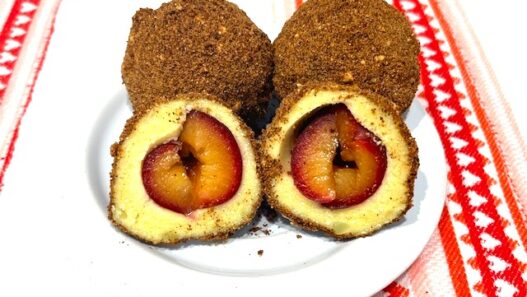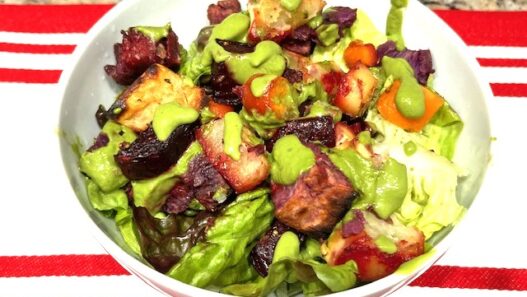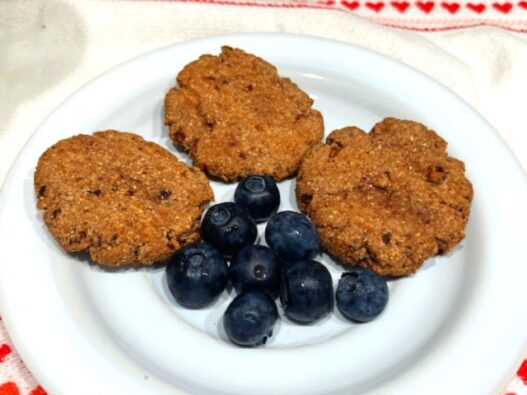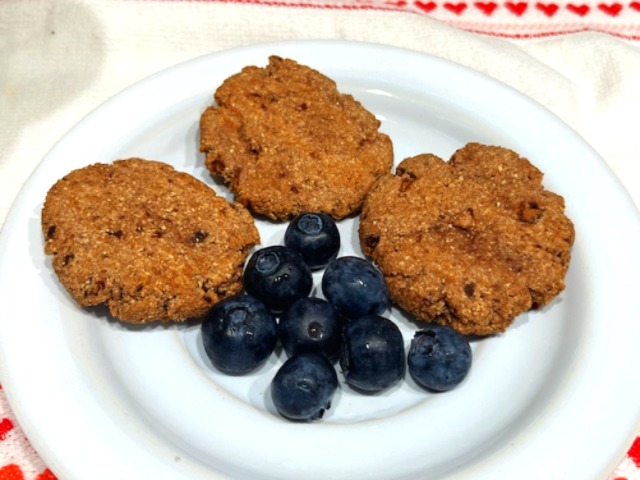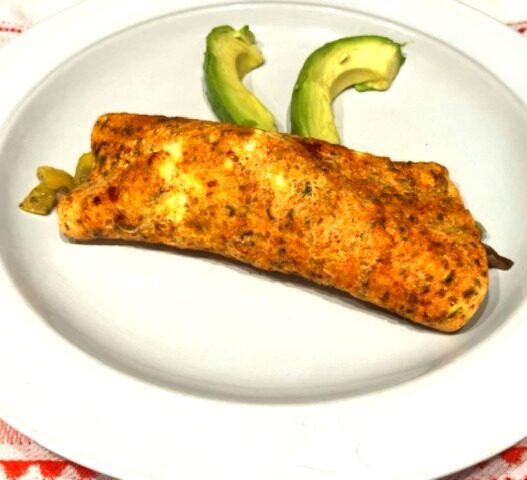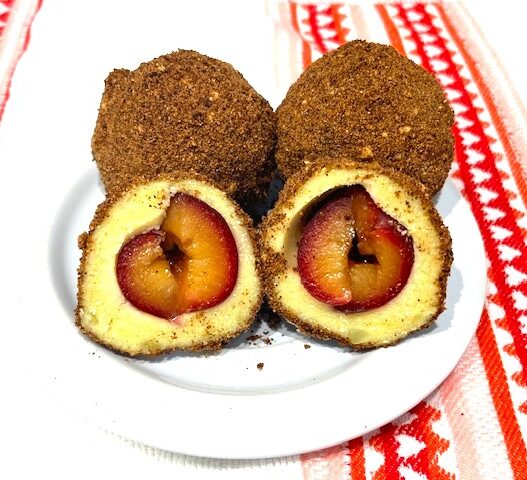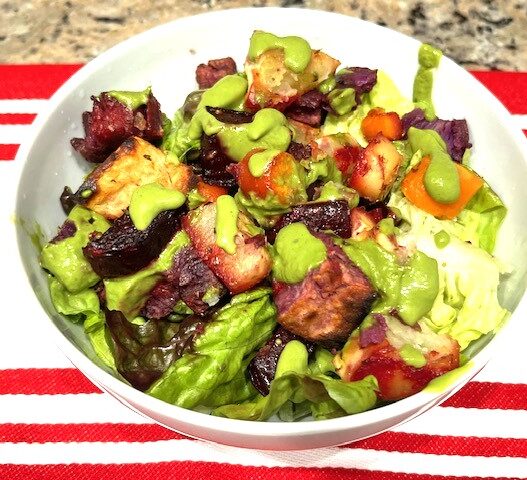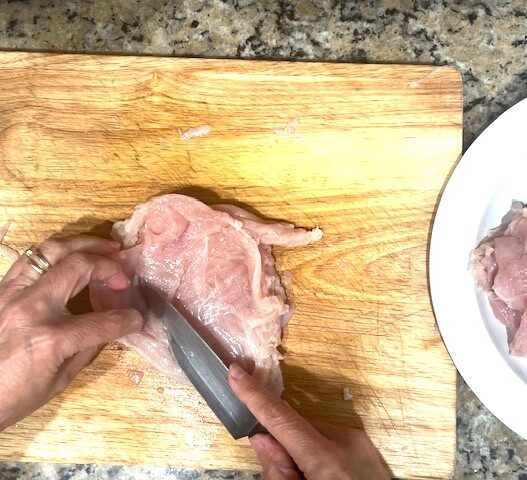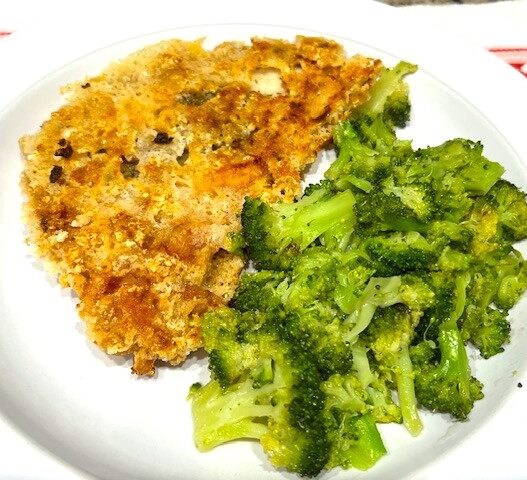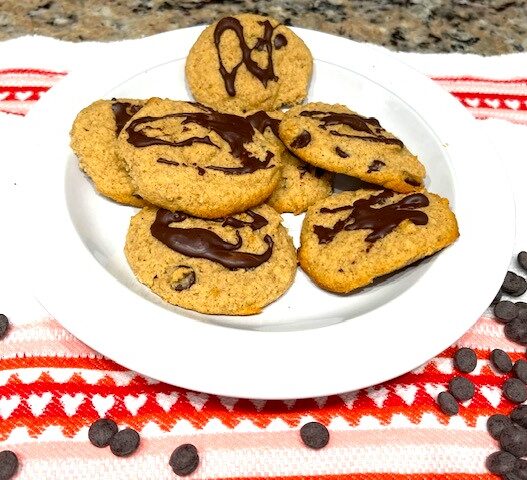Carob and Green Banana Cookies – A Guilt-Free AIP Treat!
Craving a healthy and delicious cookie? These carob and green banana flour cookies are a great option. They’re soft, chewy, and naturally sweetened. Best of all, they’re AIP-friendly, gluten-free, and dairy-free. Whether you’re looking for a quick treat or a wholesome snack, this recipe is perfect.
These cookies use simple ingredients like coconut flour, carob powder, and green banana flour. Plus, they’re easy to make, even if you’re new to baking.
Why You Would Love This Recipe
You’ll love this recipe for so many reasons! First, it’s easy to prepare. You can make the dough in minutes. Second, it’s packed with healthy ingredients that nourish your body.
These cookies are naturally sweetened with honey or maple syrup. They’re perfect if you’re avoiding refined sugar. And, they’re made with wholesome flours that are full of nutrients.
They also have a unique flavor. The combination of carob and green banana flour creates a rich, earthy taste. You won’t miss traditional cookies once you try these!
Health Benefits of These Cookies
These cookies aren’t just tasty — they’re packed with health benefits, too. Let’s take a closer look at the key ingredients.
Green banana flour is a fantastic source of resistant starch. This type of starch helps improve digestion and supports gut health. It also keeps you feeling full longer.
Carob powder is a caffeine-free alternative to chocolate. It’s rich in antioxidants and contains natural fiber. Unlike cocoa, carob doesn’t contain any stimulants, so it’s great for those avoiding caffeine.
Coconut flour is naturally gluten-free and high in fiber. It helps balance blood sugar levels and keeps you full.
Egg whites are a great source of protein. They add structure to the cookies without adding extra fat.
Honey or maple syrup provides natural sweetness without refined sugar. Both options contain antioxidants and have antibacterial properties.
Ingredients for Soft & Chewy Carob & Green Banana Flour Cookies
Let’s take a closer look at each ingredient and why it’s used in this recipe. Every ingredient has a purpose, from enhancing the texture to adding flavor or nutrients.
Egg Whites (2 large)
Egg whites help bind the dough together and give the cookies a light, fluffy texture. They are also a great source of protein without added fat. Make sure to whisk the egg whites until frothy to help incorporate air into the cookies, making them less dense.
Substitution Tip: If you need an egg-free version, try two gelatin eggs. To make one gelatin egg, mix 1 tablespoon of gelatin with 2 tablespoons of warm water and whisk until it thickens.
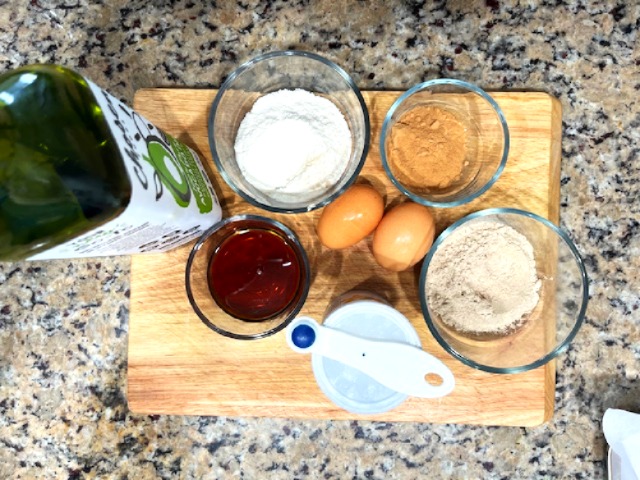
Coconut Flour (¼ cup / 30 grams)
Coconut flour is a staple in AIP baking. It’s gluten-free, high in fiber, and absorbs a lot of moisture, which helps balance the liquid ingredients in this recipe. Because coconut flour is highly absorbent, you only need a small amount to create a structured dough.
Why Use It? Coconut flour adds a subtle sweetness to the cookies and keeps them soft on the inside while slightly crisp on the outside.
Substitution Tip: You can use tigernut flour, but reduce the liquid slightly, as tigernut flour is less absorbent.
Green Banana Flour (¼ cup / 35 grams)
Green banana flour is rich in resistant starch, which supports gut health and promotes better digestion. It has a mild, earthy flavor that blends well with carob powder. Green banana flour also adds structure to the cookies without making them crumbly.
Why Use It? This flour is perfect for AIP-friendly baking because it’s nutrient-dense and versatile. Plus, it helps create a chewy cookie texture.
Substitution Tip: If you don’t have green banana flour, you can use cassava flour in equal amounts.
Carob Powder (2 tablespoons / 20 grams)
Carob powder is a naturally sweet, caffeine-free alternative to cocoa powder. It has a rich, chocolate-like taste with hints of caramel. Unlike cocoa, carob is allowed on the AIP diet and doesn’t contain any stimulants.
Why Use It? Carob gives the cookies a deep, chocolaty flavor without any bitterness. It also adds antioxidants and natural fiber to the cookies.
Substitution Tip: If you’re not on a strict AIP diet, unsweetened cocoa powder can be used as a substitute.
Honey or Maple Syrup (¼ cup / 60 milliliters)
Both honey and maple syrup are natural sweeteners that add a rich depth of flavor to the cookies. They also help keep the cookies moist and chewy.
Why Use It? Honey adds a floral sweetness, while maple syrup brings a caramel-like taste. Both options are packed with antioxidants and are AIP-friendly.
Substitution Tip: You can use date syrup or coconut nectar as an alternative if you prefer.
Avocado Oil (1 tablespoon / 15 milliliters)
Avocado oil is a healthy fat that keeps the cookies moist and tender. It has a mild flavor, so it won’t overpower the other ingredients.
Why Use It? Avocado oil is rich in monounsaturated fats, which are heart-healthy. It also helps improve the texture of the cookies by preventing them from drying out.
Substitution Tip: You can use melted coconut oil or olive oil if you don’t have avocado oil.
Baking Powder (¼ teaspoon)
Baking powder acts as a leavening agent, helping the cookies rise slightly while baking. It also improves the texture, making them soft and fluffy.
Why Use It? A small amount of baking powder is enough to give these cookies the right texture without making them too airy.
Tip: Make sure it’s grain-free and AIP-compliant.
Salt (¼ teaspoon)
Salt enhances the flavor of the cookies by balancing the sweetness and bringing out the natural flavors of the other ingredients.
Why Use It? Even a small pinch of salt makes a big difference in balancing the taste of the cookies.
Substitution Tip: Use sea salt or pink Himalayan salt for added minerals.
Instructions for Soft & Chewy Carob & Green Banana Flour Cookies
Step 1: Preheat the oven
Preheat your oven to 350°F (175°C) and line a baking sheet with parchment paper. This will prevent the cookies from sticking and ensure even baking.
Tip: If you prefer crispier edges, lightly grease the parchment paper with avocado oil.
Step 2: Whisk the egg whites
In a medium-sized bowl, whisk 2 large egg whites until frothy. You don’t need stiff peaks, but a light, bubbly texture helps incorporate air into the dough.
Tip: Use a hand whisk or fork. Whipping the egg whites adds lightness to the cookies.
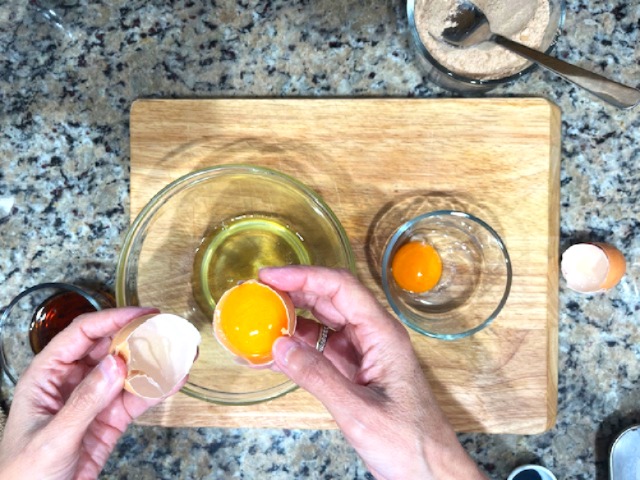
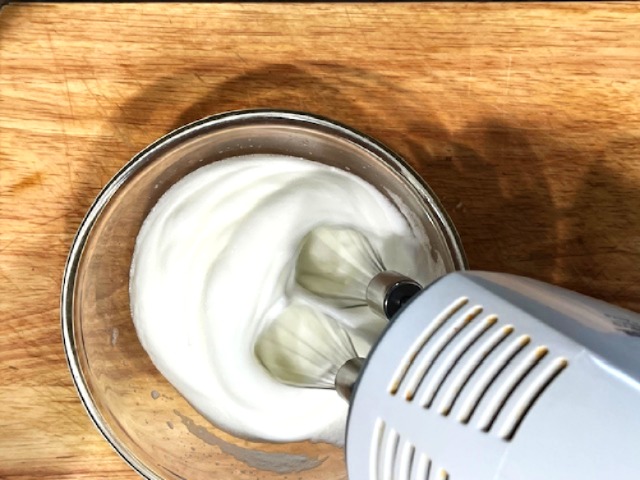
Step 3: Add the wet ingredients
To the whisked egg whites, add:
- ¼ cup of honey or maple syrup
- 1 tablespoon of avocado oil
Mix until everything is well combined. The wet mixture should be smooth and slightly thick.
Tip: If using honey, warm it slightly to make it easier to mix.
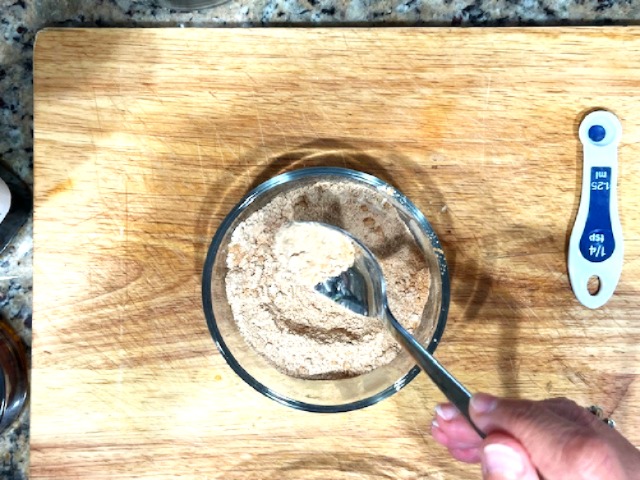
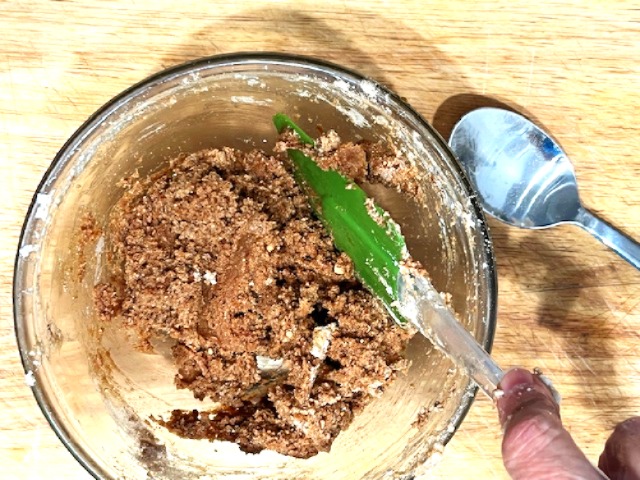
Step 4: Combine the dry ingredients
In a separate bowl, sift together:
- ¼ cup of coconut flour
- ¼ cup of green banana flour
- 2 tablespoons of carob powder
- ¼ teaspoon of baking soda
- ¼ teaspoon of salt
Whisk the dry ingredients to ensure there are no lumps. Sifting is important for even mixing and prevents clumping.
Step 5: Mix the dough
Slowly add the dry ingredients to the wet mixture. Stir gently using a spatula or spoon until a thick, sticky dough forms. The dough should hold together but not be too wet.
Tip: If the dough feels too dry, add a splash of water or more honey.
Step 6: Shape the cookies
Using a tablespoon, scoop out the dough and roll it into balls. Place them on the lined baking sheet, leaving space between each cookie. Gently press down each ball to flatten it slightly into a cookie shape.
Tip: For a decorative touch, you can press the back of a fork onto the top of each cookie to create a crisscross pattern.
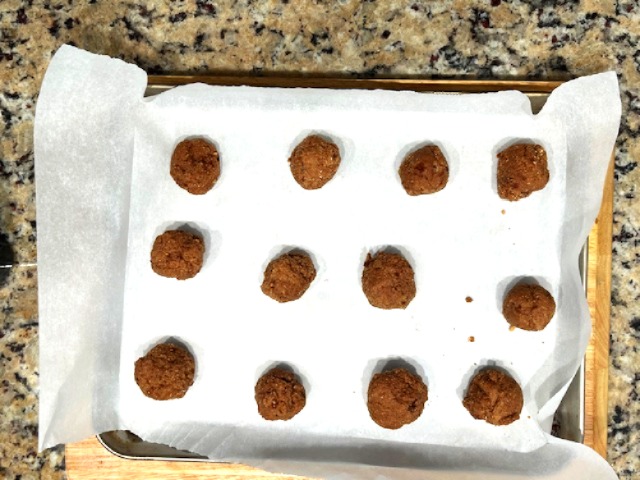
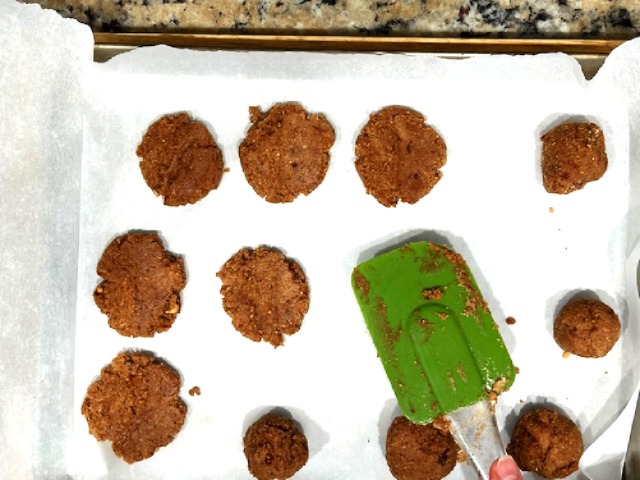
Step 7: Bake
Bake the cookies in the preheated oven for 12-15 minutes. The edges should be firm, and the tops should look slightly cracked.
Tip: Keep an eye on them after 12 minutes. Overbaking will make them dry.
Step 8: Cool and enjoy
Remove the cookies from the oven and let them cool on the baking sheet for about 5 minutes. Then transfer them to a wire rack to cool completely.
Tip: The cookies will be soft when hot but firm up as they cool.
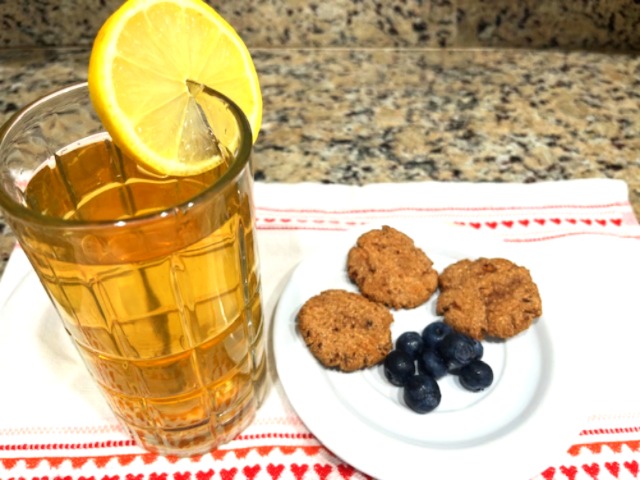
Tips for Success
To get the best results, keep these tips in mind:
- Use room-temperature eggs for better mixing.
- Flatten the cookies before baking for a crispier texture.
- If you prefer a sweeter cookie, add a little extra honey or maple syrup.
- Store your cookies in an airtight container to keep them fresh.
Storage Instructions
These cookies store well at room temperature for up to three days. Just place them in an airtight container to keep them fresh.
If you want to store them longer, freeze them. They’ll keep in the freezer for up to two months. Simply reheat them in the oven before serving.
FAQ
Can I replace green banana flour?
Yes! You can substitute cassava flour or tigernut flour. You might need to adjust the liquid slightly.
What can I use instead of honey?
Maple syrup or date syrup works just as well. It all depends on your taste preferences.
How do I make the cookies sweeter?
Add a bit more honey or sprinkle coconut sugar on top before baking.
If you love this recipe, you might also want to try:
I hope you love these Carob & Green Banana Flour Cookies! They’re easy to make, healthy, and delicious.
If you try this recipe, leave a comment below. I’d love to hear your thoughts!
Would you like more AIP-friendly cookie recipes? Let me know what you’d like to see next.
Carob and Green Banana Flour Cookies
Recipe by AIP Wellness JourneyCourse: DessertCuisine: AmericanDifficulty: Easy4
servings10
minutes12
minutes110
kcal3
cookiesCarob and Green Banana Flour Cookies – These AIP-friendly, gluten-free, paleo cookies are made with carob powder, green banana flour, coconut flour, and natural sweeteners like honey. Perfect for anyone on the autoimmune protocol (AIP), this healthy snack is free from dairy, gluten, and nuts, making it ideal for autoimmune diets like those for Hashimoto’s, autoimmune gastritis, and other autoimmune conditions. These cookies are packed with fiber, antioxidants, and anti-inflammatory properties, making them an excellent choice for anyone seeking grain-free, refined sugar-free, and immune-boosting treats. Perfect for AIP baking, autoimmune-friendly desserts, and gluten-free snacking!
Ingredients
2 egg whites
1/4 cup coconut flour
1/4 cup green banana flour
2 tbsp carob powder
1/4 cup honey or maple syrup
1 tsp vanilla extract (optional)
1/4 tsp salt
1/4 tsp baking soda
1 tbsp avocado oil
Directions
- Preheat the oven to 350°F (175°C) and line a baking sheet with parchment paper.
- In a bowl, whisk the egg whites until frothy.
- In a separate bowl, mix the dry ingredients: coconut flour, green banana flour, carob powder, baking soda, and salt.
- Combine the wet and dry ingredients: Slowly add the dry ingredients into the egg whites, followed by honey/maple syrup, vanilla, and oil. Stir well until the dough comes together.
- Use a cookie scoop or spoon to form small balls and place them on the baking sheet, gently pressing them down to flatten.
- Bake for 10-12 minutes, or until the edges are lightly golden and the cookies are firm to the touch.
- Let the cookies cool on the baking sheet for a few minutes before transferring them to a wire rack to cool completely.
Notes
- Sweetener Options: You can use honey, maple syrup, or date syrup as a natural sweetener. Adjust the quantity to suit your taste.
- Texture Tip: These cookies will be soft and chewy due to the green banana flour. If you prefer a slightly crispier texture, flatten the cookies more before baking and extend the baking time by 2-3 minutes.
- Egg-Free Option: Replace the egg whites with 2 gelatin eggs if following a strict AIP protocol.
- Flavor Twist: Add a pinch of cinnamon or vanilla extract for extra flavor.
- Storage: Store cookies in an airtight container at room temperature for up to 3 days, or refrigerate for up to a week.
- Serving Suggestion: These cookies pair well with coconut yogurt or a warm cup of herbal tea.





